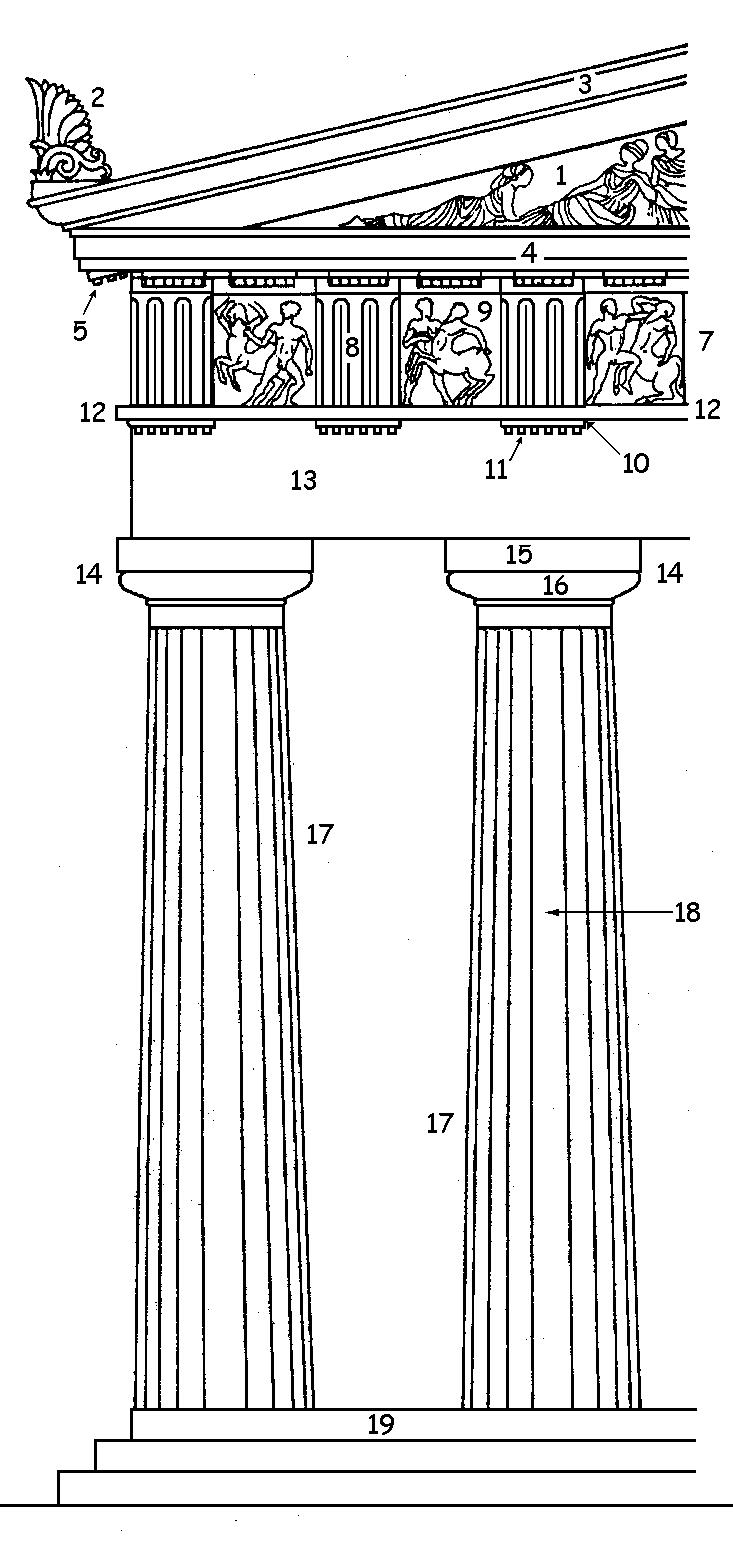Sima (architecture) on:
[Wikipedia]
[Google]
[Amazon]

 In
In
classical architecture
Classical architecture usually denotes architecture which is more or less consciously derived from the principles of Greek and Roman architecture of classical antiquity, or sometimes even more specifically, from the works of the Roman architect ...
, a sima is the upturned edge of a roof
A roof ( : roofs or rooves) is the top covering of a building, including all materials and constructions necessary to support it on the walls of the building or on uprights, providing protection against rain, snow, sunlight, extremes of te ...
which acts as a gutter. The term "sima" comes from the Greek '' simos'', meaning bent upwards.
Form
The sima runs around all four sides of a building. It may be made ofterracotta
Terracotta, terra cotta, or terra-cotta (; ; ), in its material sense as an earthenware substrate, is a clay-based unglazed or glazed ceramic where the fired body is porous.
In applied art, craft, construction, and architecture, terracotta ...
or stone. There are two basic types of sima: the raking sima, and the lateral sima. The raking sima is continuous and generally follows the slope of the roof. The lateral sima runs along the horizontal edges and is broken by downspouts to let out rainwater.
Decoration
Simas are normally decorated. Stone simas have continuous narratives, especially on the raking sides where they are not interrupted by spouts, similar to afrieze
In architecture, the frieze is the wide central section part of an entablature and may be plain in the Ionic or Doric order, or decorated with bas-reliefs. Paterae are also usually used to decorate friezes. Even when neither columns nor ...
. Terracotta simas have repeating patterns that are easy to reproduce with molds. In particular, raking simas were often decorated with floral motifs or other patterns.
Early simas feature tubular or half-cylindrical spouts, but by the middle of the 6th century BC these were mostly replaced with spouts in the shape of animal heads. Lion's heads were common, but ram and dog heads also existed. These animal heads may have served as religious symbolism, or as puns on the structure's geographic location.
References
External links
Ancient Greek architecture Roofs {{architecturalelement-stub